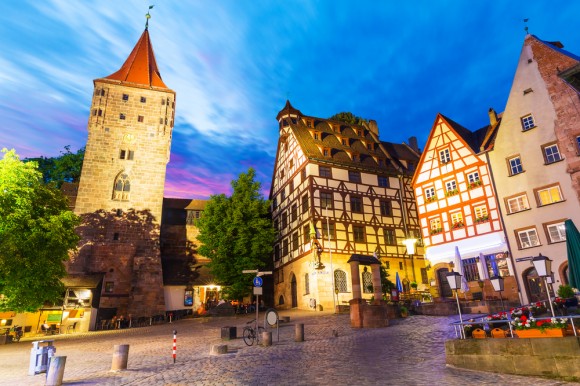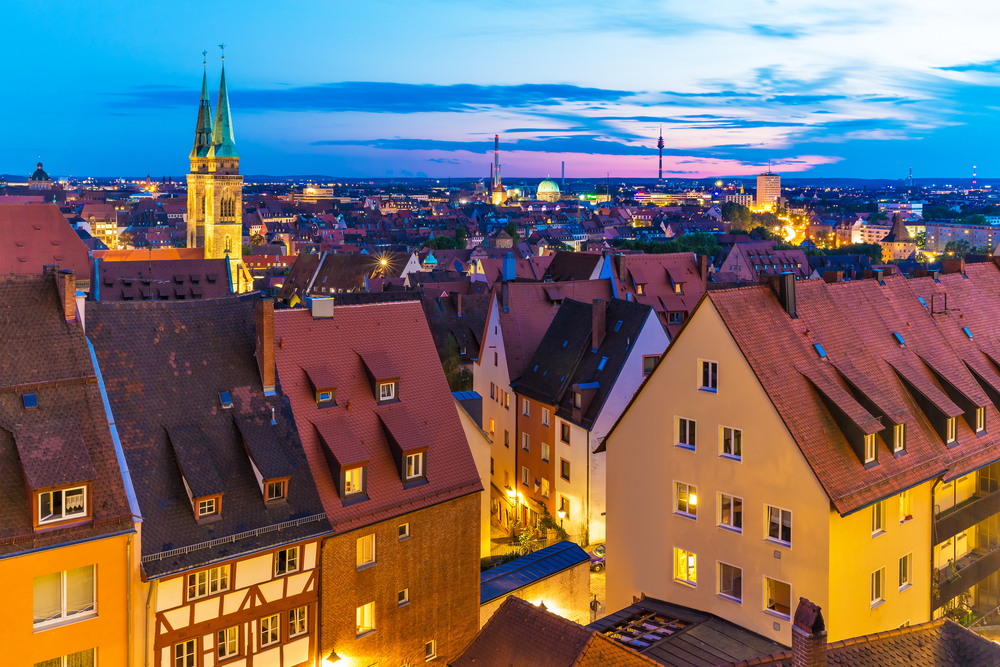The ancient city of Nuremberg has a lot to offer the visitor, including a rich history, castles, museums, great restaurants and a beautiful Christmas Market. It’s beautiful in the summer, but actually winter is an ideal time to visit this wonderful Bavarian city.
Nuremberg belongs to the state of Bavaria, in the administrative region of Middle Franconia. Located 110 miles north of Munich, it is situated on the Pegnitz River and the Danube-Rhine-Main Canal. Nuremberg is the second largest city in Bavaria and the largest city in Franconia with more than a half a million people.
History and the Nazi Era
The first documented mentioning of the city dates back to 1050 as a location of an Imperial castle. The city is remembered in history for its strong connection to the Holy Roman Empire; the general assembly and courts of the Roman Empire were held at the Nuremberg Castle. Between 1050 and 1571 Nuremberg increased in size and significance, and expanded drastically as a result of its position at the heart of vital trade routes.
During the third reich, Nuremberg became the Nazi Party’s site for its mammoth conventions known as the Nuremberg rallies. It was also the place where the Reichstag was ordered by Adolf Hitler to pass laws that revoked citizenship for all Jews and other non-Aryans.
Throughout World War II, Nuremburg served as the Nazi’s military district headquarters (Wehrkreis XIII) where military tank engines, submarines and aircrafts were also manufactured. As a result, Nuremberg was strategically and heavily bombed by the Allied Forces between 1943 and 1945. In fact on January 2, 1945 ninety percent of the medieval city was destroyed in just one hour by the British and American air forces with 1800 residents being killed. One month later approximately 6000 residents were killed by additional air raids.
The once heavily fortified city was captured in 1945 by a fierce battle between the German soldiers and several U.S. Infantry Divisions. The Americans had to fight block by block and moved from one house to the other as they defeated the dwindling German resistance. This fierce street battle caused additional urban devastation to the already bombed and shelled buildings.
Post-war, the reconstruction of the city was restored amicably, including some of the medieval buildings. Though sadly, the historic structural condition of the Old Imperial Free City was lost forever.
The Nuremberg Trials
The city is perhaps most synonymous with the post-war military tribunals that followed in 1945-46, which were held by Allied Forces. The basis was to prosecute a number of political, military and economic leaders of Nazi Germany who were accused of Crimes Against Peace, Planning & Initiating Wars of Aggression, War Crimes and Crimes Against Humanity. Known as Nuremberg Trials, these tribunals where the first of their kind and set a precedent for the establishment of a permanent International Criminal Court as well as influencing the development of international criminal law, namely the Geonocide Convention, the Universal Convention of Human Rights, the Nuremberg Principles (which codifies what constitutes a war crime) and the Geneva Convention.
In all, 24 men were brought before an international group of judges to face justice at the Nuremberg Trials. The main thrust of the defendants’ case was “I was only following orders.” This phrase has been used in defending accused war criminals for centuries and has become known as “The Nuremberg Defense,” referring to any attempt to deflect personal responsibility for a crime onto institutions like an army or the state.
Twelve of the accused were sentenced to death, seven received prison sentences (ranging from 10 years to life in prison), three were acquitted, and two were not charged. Sadly many of the key architects of WWII and the Holocaust such as Adolf Hitler, Heinrich Himmler and Joseph Göbbels all committed suicide and escaped justice before the indictments were signed.
Night Life in Nuremberg
Setting aside its difficult past during the Second World War, the modern city of Nuremburg is one of the best places to be for night in Europe and arguably the best in Germany. A couple of popular hot spots include Club Stereo with its huge guests list, music and drinks and Club Goija with its stylish contemporary interiors and one of a kind atmosphere.
If you have time, you can also pop into a number of fancy and well-known clubs in Nuremburg such as the Cafe and Bar Celona Finca, Karaoke Bar Hallertor, O Shea’s Irish Pub, Mata Hari Bar, Bar 77, mach1 and many others. During the summer most of these places also offer beer gardens and they are wonderful spots to enjoy a cold drink in the sun.
Cuisine
It is hard to be in Nuremberg and to miss its two main unique cuisines famous around the world. The first is the Nürnberger Bratwurst, the grilled thin and short sausage. Second is the Nürnberger Lebkuchen, the gingerbread what is mostly enjoyed during the Christmas holidays. Winter is the perfect time to try them both.
Where to Eat
There are numerous restaurants to enjoy local cuisine, German delicacies and international dishes of all kinds. You can start your culinary quest at the Goldenes Posthorn, which has served the city since 1498. Here you will find high quality typical Franconian dishes such as sausages, pig knuckle and roast. The historical Bratwursthausle restaurant has its own butcher shop and cooks the famous little sausages on an open beech-wood grill. The Hutt’n is the perfect place for a candlelight dinner while enjoying traditional delectables such as sauerkraut salad (Krustenschaufele), dumplings, crackling and roast pork. Other favorites in the city are the Italian restaurant Bardolino, the American Boogie’s BBQ Smokehouse and the Chinese restaurant BaShu.
Must See Places
Nuremberg Castle should be your first stop when touring the city! It is made up of three sections: the Imperial castle, some buildings of the Burgraves of Nuremberg and the municipal building of the Imperial City. Along with the city walls, the Nuremberg Castle is considered to be one of Europe’s most formidable medieval fortifications.
As the city where the Nazi party found and thankfully also brought to justice, the Dokumentationszentrum Reichsparteitagsgelände or the Documentation Center Nazi Party Rallying Grounds is a museum located at the former Rallying Grounds. The permanent exhibition called Fascination and Terror (Faszination und Gewalt) and provides an insight into Nazi Germany. It explores the causes of the Nazi regime, connections, aftermath and consequences particularly in reference to the city of Nuremberg.
The Kaiserburg Castle offers the chance to take a glimpse into the life of a Roman emperor during the Middle Ages. Here you can visit the imperial apartments in the main building where you will find paintings from the 16th and 17th centuries, tapestries and furniture, the Romanesque double chapel, the Sinwellturm tower and an extensive collection of weapons and tools.
To truly discover Nuremberg’s history, the Tucher Knight Games should not be missed. This large medieval fair is much more than knight tournaments. You can watch history come alive with entertainers dressed in costumes as traveling minstrels, witches, merchants, maidens and many other medieval characters.
Founded in 1852, the Germanisches Nationalmuseum has the largest collection of items relating to German culture and art spanning from prehistoric times to present day. This museum is Germany’s largest culture museum and has more than 1.2 million items. Here you will be able to see the oldest existing European tapestry that dates back to the early 11th century, the Cloth of St. Gereon.
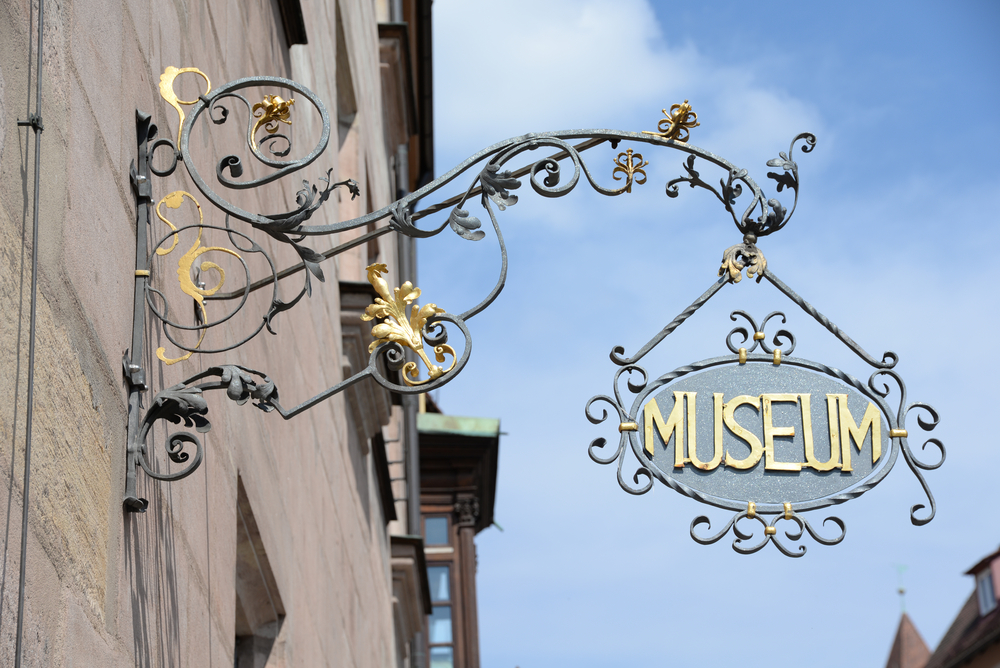 Volker Rauch / shutterstock.com
Volker Rauch / shutterstock.com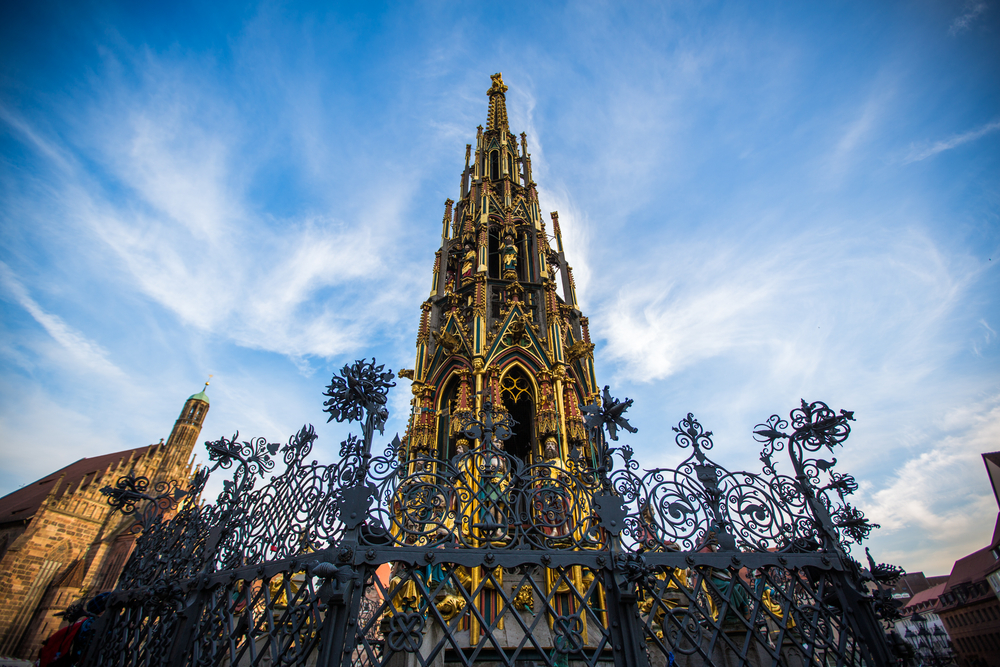 shutterstock.com
shutterstock.comBy Christmas Eve, more than two million visitors from around the world attend the Nuremberg Christmas Market, which is held in the Hauptmarkt square located in the historic district. Visitors can absorb the medieval charm and sample the festive delights of gingerbread, Glühwein and roasted macaroons. The 200 plus stalls offer a vast array of items including traditional wares such as gingerbread, fruit loaves, bakery goods as well as Christmas articles such as Christmas tree angels, Christmas tree ornaments, candles, toys and much more. This year’s market will take place from November 28 to December 24. It will be open daily from 10am-9pm except on Christmas Eve (10am-2pm).
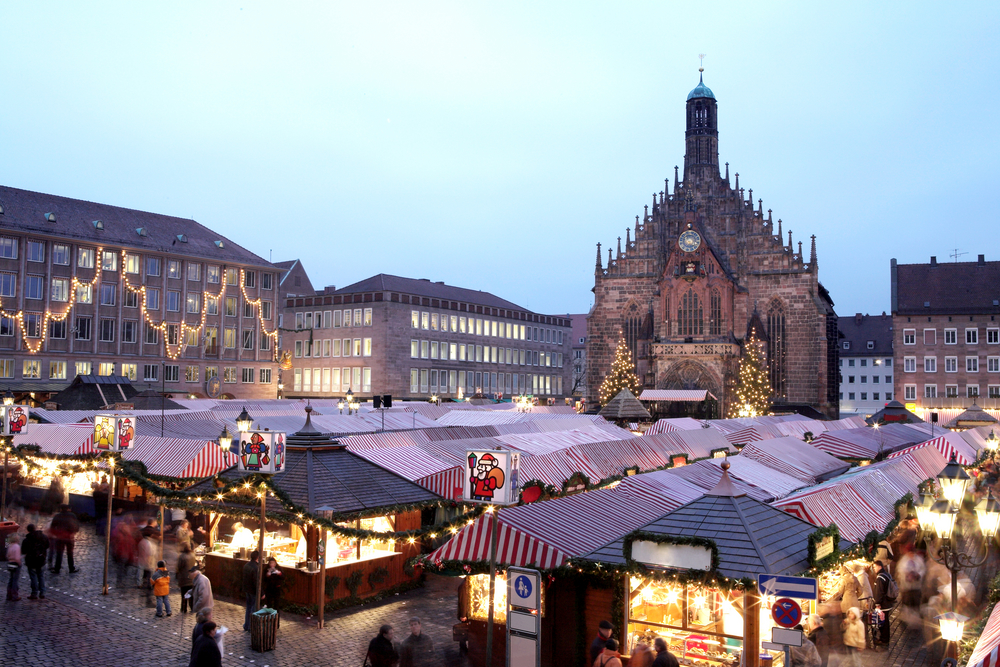 Sean Nel / shutterstock.com
Sean Nel / shutterstock.comA visit to the city of Nuremberg is a walk into a tourist’s paradise. This once ancient Roman city has a lot to offer including a rich history, castles, museums, many restaurants serving up Nuremberg and international cuisines, one of the largest Christmas Market and so much more.
How to Get there
By car, Nuremberg is approximately three hours east of Kaiserslautern, just under 2 hours and 30 minutes east of Wiesbaden and just over 2 hours northeast of Stuttgart. Click on DB Bahn for train information.
Cover photo by Scanrail1

